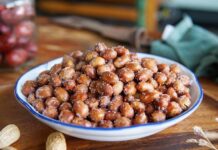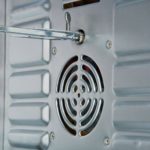The summer season brings an abundance of fruits, and many opt for drying them to enjoy all year round. But what is the optimal choice among air fryers, microwave ovens, and baking ovens? The answer may surprise you! Each appliance has its pros and cons, so let’s explore them together to make an informed decision.
1. Drying Fruits with an Air Fryer
Using an air fryer is a convenient and efficient way to enjoy delicious and nutritious homemade snacks. However, it’s essential to carefully consider the advantages and disadvantages of this method before deciding to use it.
Advantages of Drying Fruits with an Air Fryer
-
Quick and Convenient: Air fryers with high power and rapid heating capabilities significantly reduce the time required to dry fruits compared to traditional methods. You can enjoy crispy fruit snacks in no time.
-
Preserves Flavor: Thanks to its heat circulation technology, the air fryer dries fruits evenly and quickly, retaining their natural flavor, fresh colors, and beneficial nutrients.
-
Variety of Fruits: You can experiment with various fruits such as mangoes, bananas, apples, and pineapples without worrying about spoilage or losing their distinctive flavors.
-
Hygienic: Drying fruits in an air fryer occurs in a closed environment, minimizing contact with dust and bacteria, ensuring hygienic and safe products.
 Drying fruits with an air fryer
Drying fruits with an air fryer
Disadvantages of Drying Fruits with an Air Fryer
-
Limited Capacity: Compared to dedicated dehydrators, air fryers usually have a smaller capacity. This means you can only dry a moderate amount of fruit in one go.
-
Requires Monitoring: To ensure even drying and prevent burning, constant observation and turning of the fruit slices are necessary during the drying process.
-
Cost: Air fryers tend to be more expensive than other kitchen appliances, and there’s also the ongoing cost of electricity to consider.
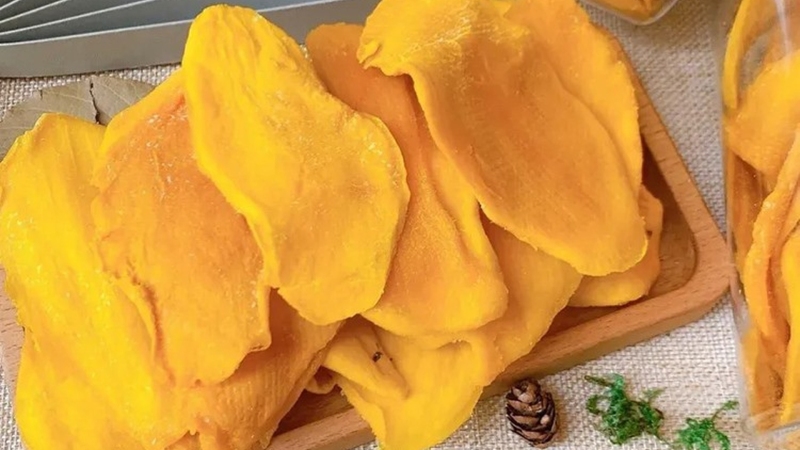 Disadvantages of drying fruits with an air fryer
Disadvantages of drying fruits with an air fryer
2. Drying Fruits with a Microwave Oven
Using a microwave oven to dry fruits is a quick and convenient method, but it has certain limitations regarding the quality of the final product. If you prioritize speed and simplicity over flavor, this option is worth considering.
Advantages of Drying Fruits with a Microwave Oven
-
Speed: Microwave drying is extremely fast, taking only 15-20 minutes to produce a batch of crispy dried fruits. This is ideal for busy individuals.
-
Space-Saving: You can utilize both the upper and lower racks of the microwave to dry different types of fruits simultaneously, saving time and space.
-
Simplicity: The process is straightforward: slice the fruits, arrange them on a plate, and pop them into the microwave.
 Advantages of drying fruits with a microwave oven
Advantages of drying fruits with a microwave oven
Disadvantages of Drying Fruits with a Microwave Oven
-
Loss of Natural Flavor: Due to the nature of microwave cooking, dried fruits often lose some of their natural flavors and colors compared to other drying methods.
-
Difficult to Control: Adjusting the temperature and drying time in a microwave can be tricky, leading to either under-dried or burnt fruits.
-
Impact on Microwave: Frequent use of the microwave for drying fruits at high power may reduce its lifespan.
 Disadvantages of drying fruits with a microwave oven
Disadvantages of drying fruits with a microwave oven
3. Drying Fruits with a Baking Oven
A baking oven is not just for roasting delicious dishes; it’s also a versatile tool for drying fruits. Many people trust this method because of its notable advantages. However, there are also some disadvantages to keep in mind.
Advantages of Drying Fruits with a Baking Oven
-
Speed and Efficiency: Baking ovens, with their high power and rapid heating, significantly reduce the time needed to dry fruits, resulting in quick and efficient drying.
-
Large Capacity: Compared to mini dehydrators or air fryers, baking ovens boast a larger capacity, allowing you to dry a substantial amount of fruit in one go.
-
Preserves Flavor and Nutrition: The flexible temperature control of baking ovens ensures fruits are dried evenly while retaining their natural flavors, fresh colors, and beneficial nutrients.
-
Hygienic: Drying fruits in a baking oven maintains food safety and hygiene, minimizing bacterial contamination.
-
Energy-Saving: Thanks to their excellent heat retention, baking ovens consume less energy than other drying methods.
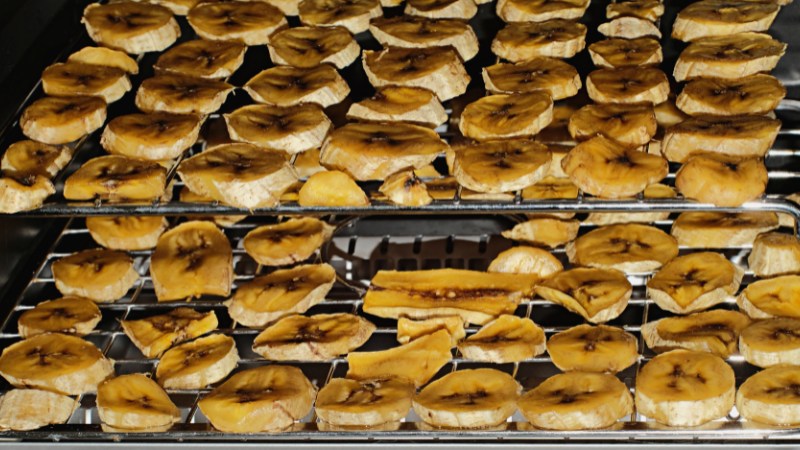 Advantages of drying fruits with a baking oven
Advantages of drying fruits with a baking oven
Disadvantages of Drying Fruits with a Baking Oven
-
Temperature Control: Baking ovens operate at high temperatures, so careful temperature adjustments are necessary to prevent burning the fruits.
-
Energy Consumption: Using a baking oven for fruit drying will consume a significant amount of electricity.
-
Complex Cleaning: Fruits can stick to the baking tray if not lined with parchment paper, making cleaning more challenging.
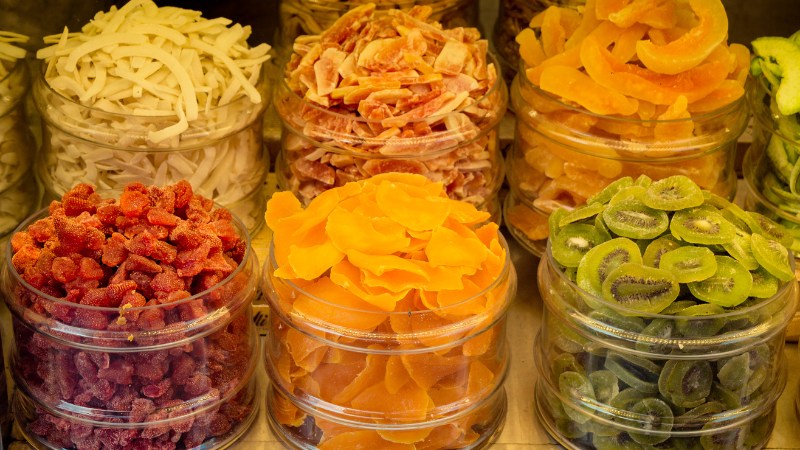 Disadvantages of drying fruits with a baking oven
Disadvantages of drying fruits with a baking oven
Each method of drying fruit with a baking oven, microwave, or air fryer has its pros and cons, catering to different needs and preferences.
-
Baking Oven: The traditional method that delivers natural-tasting dried fruits. However, careful temperature and timing adjustments are necessary to avoid burning.
-
Microwave Oven: A quick and convenient option, but it may compromise the natural flavor of the fruits.
-
Air Fryer: Strikes a balance between speed and quality, resulting in crispy fruits with retained flavors. Yet, its limited capacity may be a drawback.
Whether you’re treating yourself, gifting loved ones, or starting a business, successfully dried fruits can bring joy and even extra income.
Is Cooking with Aluminum Foil in an Air Fryer Healthy?
Are you wondering about the safety of using aluminum foil in an air fryer? We will look into the matter and provide you with an answer.















